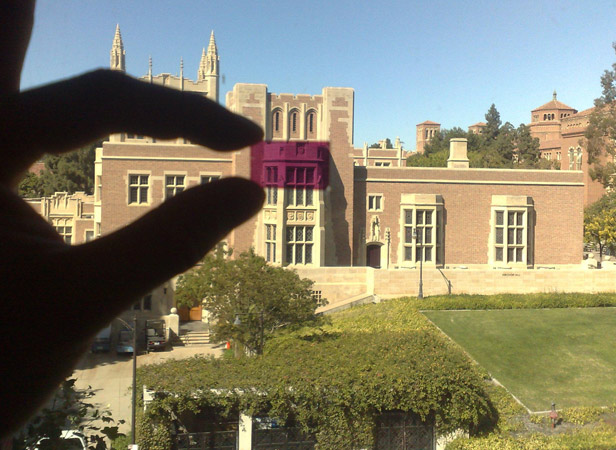Energy-Harvesting Displays

Source: “Polarizing Organic Photovoltaics”
Yang Yang et al.
Advanced Materials online, August 9, 2011
Results: Researchers have made an optical filter that can double as a solar cell, converting light into electricity. The new filter, a type of polarizer, works just as well as the polarizers normally used in liquid-crystal displays. But it can convert 4 percent of the light wasted by ordinary polarizers back into electricity. It can also scavenge energy from ambient light and sunlight.
Why it matters: More than 90 percent of the displays sold this year to serve as screens for cell phones, tablet computers, televisions, and other electronic devices will be liquid-crystal displays. These displays are inexpensive to make, but they have dismal energy efficiency: only about 5 percent of the light produced makes it to the image that the viewer sees. Polarizers, which filter out light coming from different angles to make it compatible with the liquid-crystal shutters found in these displays, are the most wasteful component. A lot of power could be saved by photovoltaic filters that convert otherwise wasted light into electricity to power the display.
Methods: Researchers at the University of California, Los Angeles, started by making a small, thin sheet of the material most commonly used as the light-absorbing layer in plastic solar cells. They repeatedly rubbed the sheet with a cloth to comb the polymer molecules into the same orientation. With its molecules thus aligned, the film can act as a polarizing filter, letting through half the light and absorbing the other half. The researchers then added the other layers necessary to make a solar cell, including a charge collector to get electrical current out of the device.
Next steps: The researchers hope to identify materials that can increase the efficiency of the photovoltaic filter. They are currently in discussions with device manufacturers about commercialization.
Practical Optical Circuits
A silicon waveguide overcomes a fundamental barrier to optical computing
Source: “Nonreciprocal light propagation in a silicon photonic circuit”
Axel Scherer et al.
Science 333: 729–733
Results: A silicon waveguide developed by researchers in California causes light to behave differently depending on the direction in which it’s moving. Light is able to travel freely in one direction down the waveguide but is bent as it travels in the opposite direction.
Why it matters: Physicists have been wrestling with the unruly behavior of light in silicon for a long time: it has a tendency to scatter, even reflecting backward. Controlling this behavior has been one of the biggest challenges facing researchers trying to develop optical circuits, which promise to be faster and more energy efficient than the electrical circuits used in today’s computer chips. Researchers at Caltech and the University of California, San Diego, developed the directional waveguide using the same equipment and the same material—silicon—that’s used to make today’s computer chips.
Methods: Using methods that are already common in the semiconductor industry, the researchers fabricated a long, narrow strip of silicon about 800 nanometers wide, with metal spots along the side like bumpers. Then they performed a series of tests to characterize the way light moved through this waveguide.
Next steps: Changing the behavior of light moving in a particular direction may be the most difficult challenge in solving the problem of light scattering in silicon circuits, but it is only the first step. The researchers are now building on this work to engineer a device called an optical isolator, which won’t just bend light traveling in one direction but bring it to a halt. This isolator will then be tested in optical circuits.
Keep Reading
Most Popular
Large language models can do jaw-dropping things. But nobody knows exactly why.
And that's a problem. Figuring it out is one of the biggest scientific puzzles of our time and a crucial step towards controlling more powerful future models.
How scientists traced a mysterious covid case back to six toilets
When wastewater surveillance turns into a hunt for a single infected individual, the ethics get tricky.
The problem with plug-in hybrids? Their drivers.
Plug-in hybrids are often sold as a transition to EVs, but new data from Europe shows we’re still underestimating the emissions they produce.
Stay connected
Get the latest updates from
MIT Technology Review
Discover special offers, top stories, upcoming events, and more.